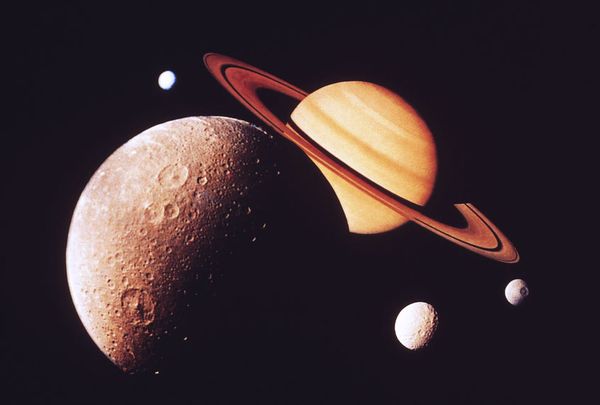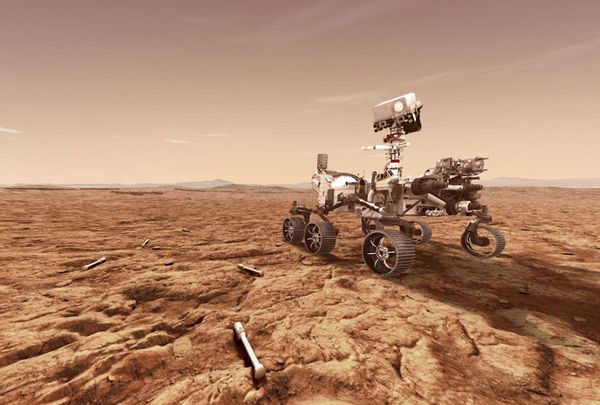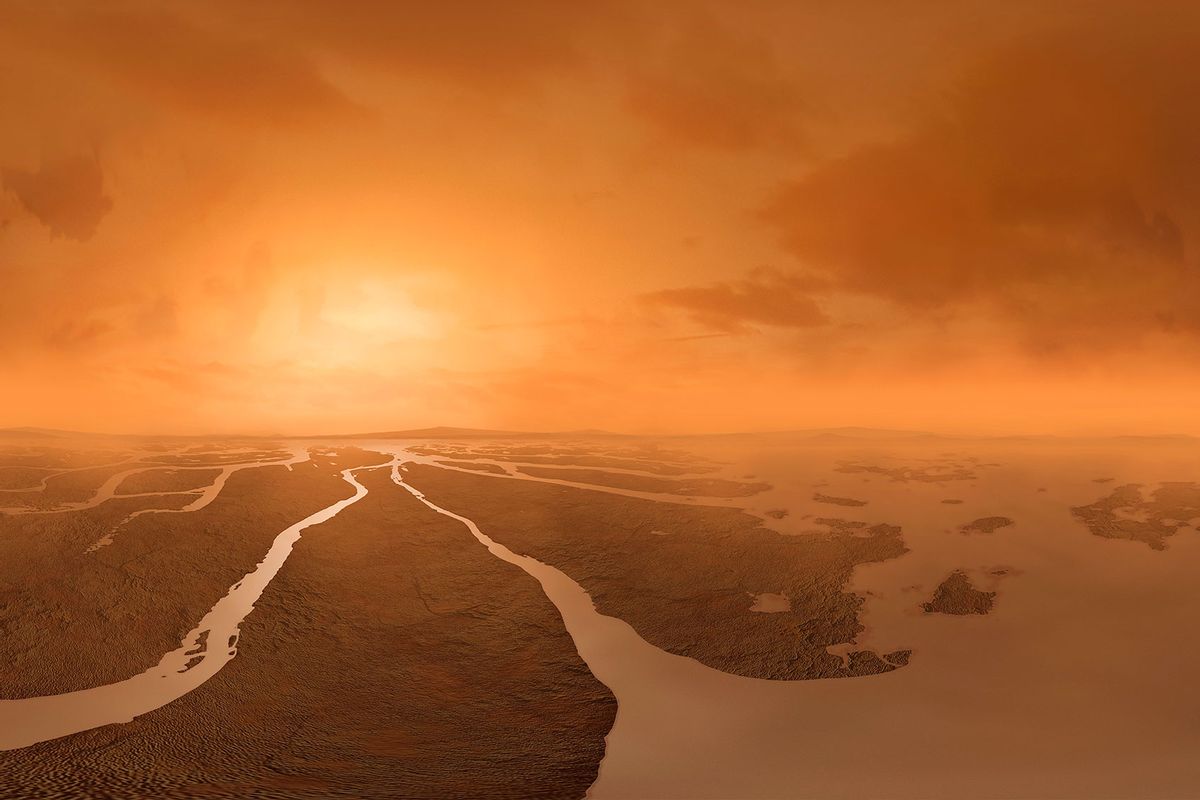Rivers on Earth are abundant, in spite of climate change that is evaporating many water sources. In 2018, scientists estimated that rivers and streams, excluding land with glaciers, covered nearly 300,000 square miles across the world.
But rivers aren't as prevalent in the rest of the solar system. As it stands, astronomers believe that there are only two other worlds in our solar system where rivers have flowed: Mars and Saturn's largest moon, Titan. Rivers on Mars haven't flowed for billions of years, but the red planet has been rocked by many cataclysmic events that stripped away its liquid water. All scientists can see today are the degraded remnants of rivers.
However, with Titan, astronomers believe that much of its surface is filled with liquid, but unlike on Earth, the liquid in question is not H2O, but liquid methane. (Yes, it would smell as bad as you imagine.)
We may learn more about Titan's makeup in a decade or so. In 2027, NASA's Dragonfly mission is scheduled to launch from Earth, embarking on what will be an eight year journey to Titan, the second-largest moon in the solar system. Similar to the Perseverance rover on Mars, the goal of this astrobiology mission is to advance our world's understanding of the "building blocks of life" and to look for signs of life on Titan, which will include understanding the presence of rivers.
But since that is years away, planetary scientist Samuel P. D. Birch, who is also a professor at Brown University, and colleagues used data from rivers on Earth and a little bit of math to unlock clues about rivers on Mars and Titan, and what that can tell us about their climates. Their findings were published in the journal Proceedings of the National Academy of Sciences on Monday.
"It's hard to know what the climate was like on Mars — was it warm, was rainfall flowing across the surface, or was it just glaciers that were melting?" Birch told Salon. For Titan, thanks to data collected by the Cassini spacecraft flybys, scientists have "coarse," and "grainy images" of the moon, but not much data about what's happening on the surface. "So we had to come up with some sort of method where we could make predictions of what the rivers were doing and therefore what the climate was like."
 Saturn with moons (Getty Images)
Saturn with moons (Getty Images)
"We had to come up with some sort of method where we could make predictions of what the rivers were doing and therefore what the climate was like."
On Earth, Birch said he thinks of rivers as "conveyor belts" that are draining continents of their sediments, and delivering them to other locations. In his words, they are almost "mechanical" in a way. From a data perspective, a river's depth, width and flow are often adjusted to meet the demands of how this sediment moves. "So we took advantage of this regularity on Earth to then make predictions about what rivers on other planets are doing. So we do the inverse — we measure how wide they are, how steep they are and then we can predict how much fluid and sediment is flowing through them or was required to flow through them to give them that shape."
Using a method called dimensionless hydraulic geometry, Birch and his colleagues landed on a couple of predictions based on both worlds. Birch said he and his colleagues solved a "geometry problem" regarding how long it would take for the littler rivers to fill the deltas that the Perseverance and Curiosity rovers explored on Mars. This gave them a better understanding of how the Martian rivers flowed over prolonged time periods of time.
"It requires a long time basically, because they're not very big rivers that are flowing into very big deltas," Birch said. "So it's always going to take kind of a long time, and it's anywhere from as low as I think 20,000 or so years, up to millions of years. It's a big range, which is quite a long time for there to be liquid water stable on the surface. Was it raining a little bit and then super dry in between? We couldn't tell that. But we could tell how long it takes for a little river to build this big delta."
Want more health and science stories in your inbox? Subscribe to Salon's weekly newsletter The Vulgar Scientist.
On Titan, Birch said, there are rivers similar in size to the Mississippi river flowing into seas that are bigger than the Great Lakes here on Earth. Birch and his colleagues found, to their surprise, that the rivers on Titan move quite slowly and require less energy to mobilize to sediment.
 NASA's Perseverance (Mars 2020) stores rock and soil samples in sealed tubes on the planet's surface for future missions to retrieve in the area known as Jezero crater on the planet Mars. (NASA/Getty Images)"The sediment is very buoyant, it's not floating, but it's closer to floating than the sediment here on Earth, so it takes less energy to pick up a particle and move it," Birch said. "And the reason it's slower is because it rains very infrequently on Titan."
NASA's Perseverance (Mars 2020) stores rock and soil samples in sealed tubes on the planet's surface for future missions to retrieve in the area known as Jezero crater on the planet Mars. (NASA/Getty Images)"The sediment is very buoyant, it's not floating, but it's closer to floating than the sediment here on Earth, so it takes less energy to pick up a particle and move it," Birch said. "And the reason it's slower is because it rains very infrequently on Titan."
On Titan there are rivers similar in size to the Mississippi river flowing into seas that are bigger than the Great Lakes here on Earth
On Titan "infrequently" means that it can be years in between storms.
"Titan is kind of arid, but when it does rain, these rivers can pick up and move stuff, and that was our finding there," Birch said. "And then the other thing that I thought was super exciting, because the rivers are so buoyant it just takes like a little trickle to mobilize sediment on Titan."
Birch said these findings emphasize that Titan is "the most exciting place for exploration in the solar system."
"It has this active hydrologic system, as we call it, on Earth. It's the water cycle where you have evaporation off of the oceans and precipitation on the land and then rivers carry that back down to the ocean," Birch said. "It has that similar type system with a totally different fluid, and it's not clear why Titan is the only other place that has this in our solar system."
Birch added that understanding rivers on other worlds "leverages how regular rivers are on earth," and simultaneously "shows the universality of physics that's driving these."



Shares